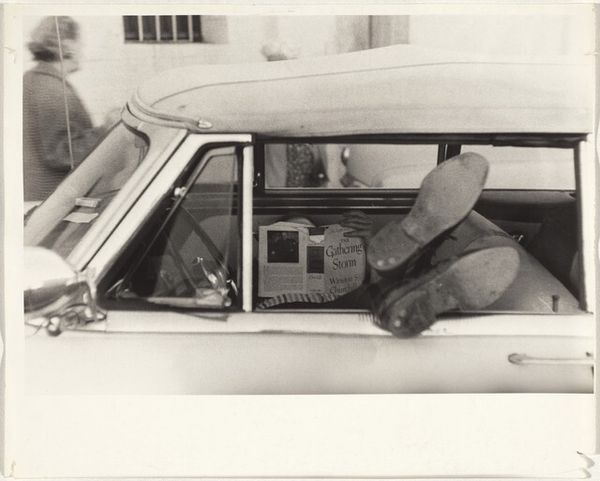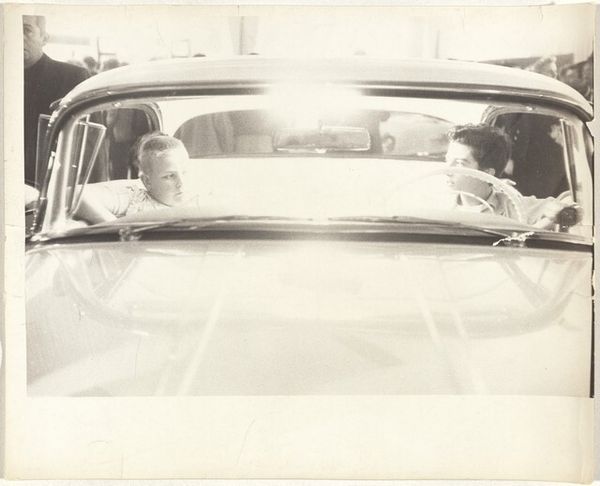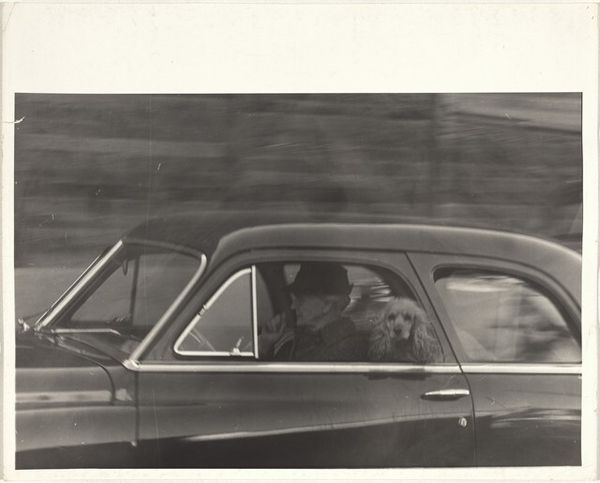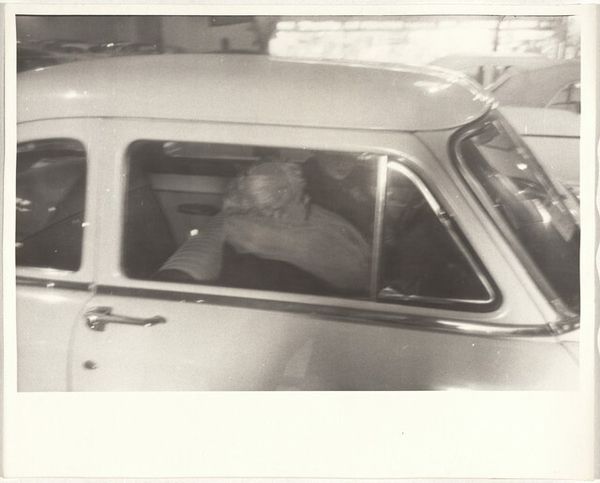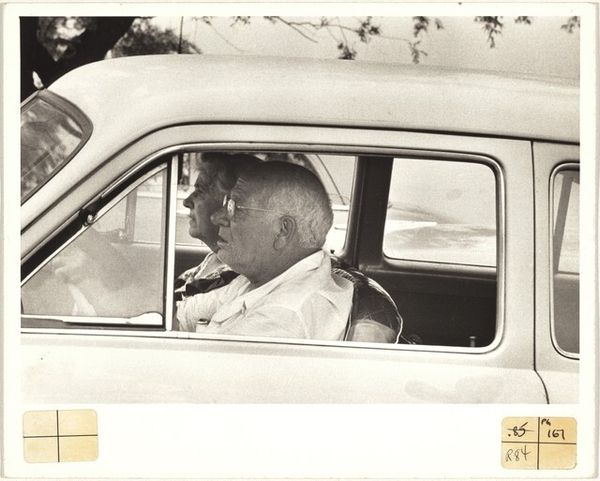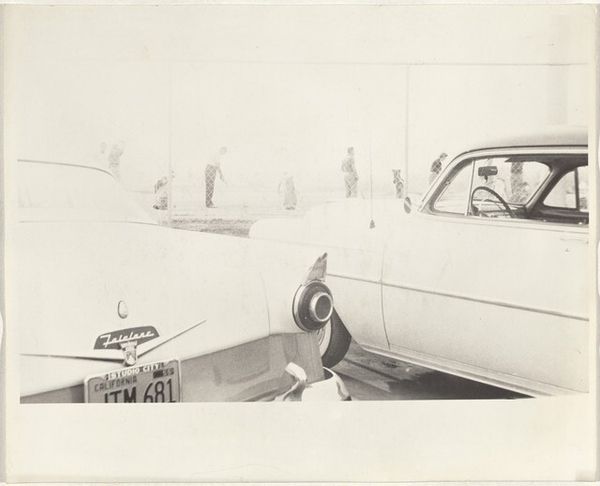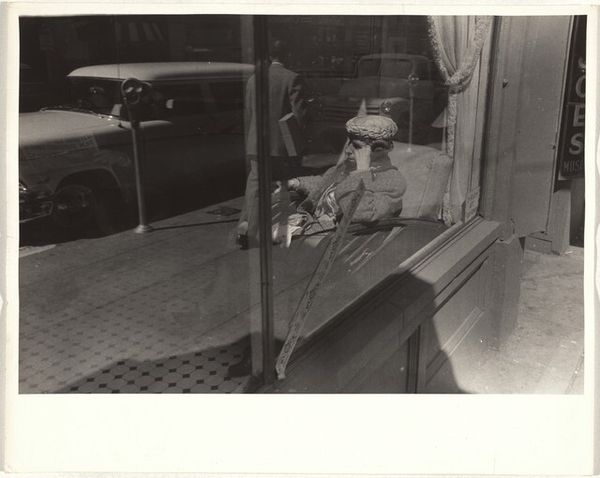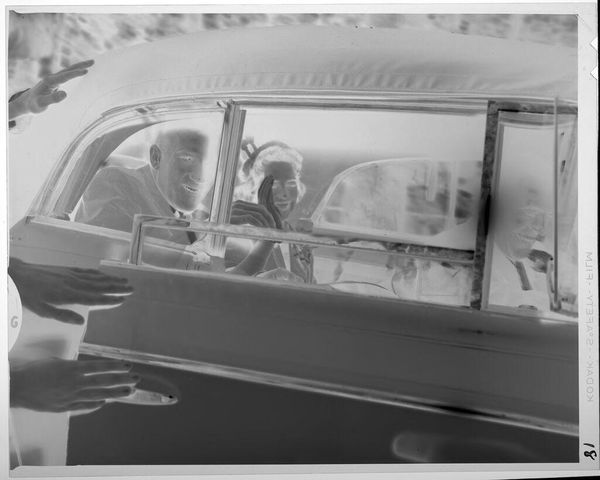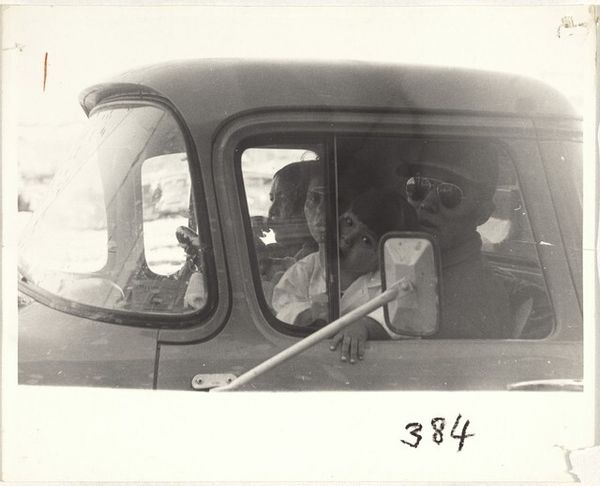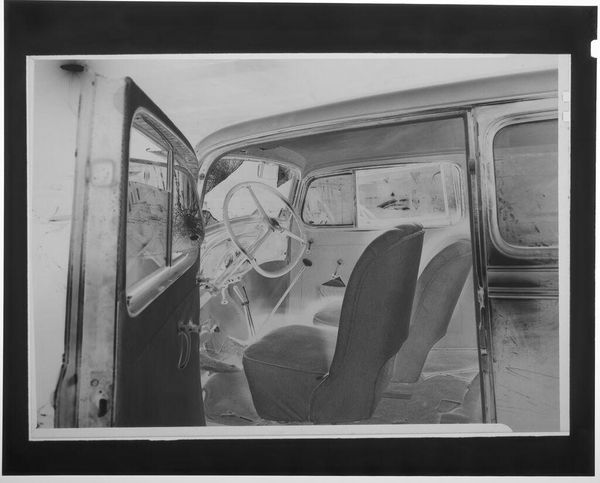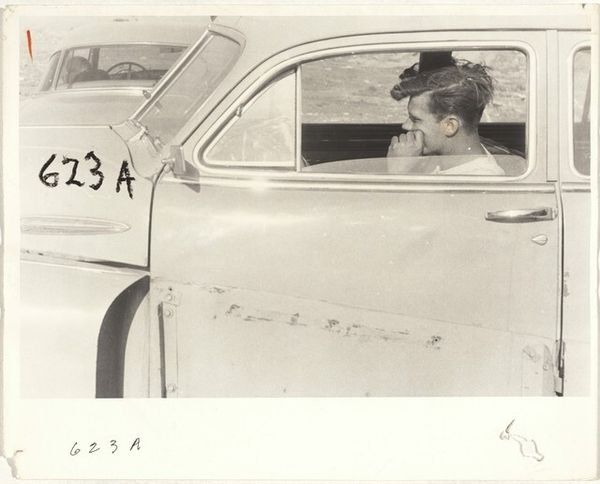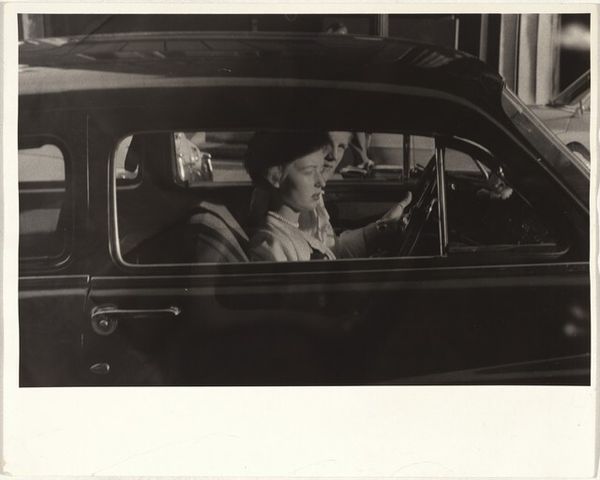
print, photography, gelatin-silver-print
#
portrait
# print
#
street-photography
#
photography
#
gelatin-silver-print
#
modernism
#
realism
Dimensions: sheet: 20.3 x 25.2 cm (8 x 9 15/16 in.)
Copyright: National Gallery of Art: CC0 1.0
Curator: This rather striking image is Robert Frank’s "Man reading in automobile--Los Angeles" taken in 1956, a gelatin silver print. What are your first impressions? Editor: A touch unsettling, actually. The way the figure is presented—feet out the window, casual yet almost confrontational. There's something almost arrogant, defiant, and weary wrapped in that pose. Curator: Interesting that you use "weary," because the condition of the work clothes really draws my eye. The dusty shoes, the box marked "Gathering Storm"—the title of Churchill's book, if I'm not mistaken, which sits in the window, next to what appears to be someone’s hand. The means of accessing knowledge—books, the automotive age which enables them to be easily accessible—presented here through daily experience. It’s about work, mobility, and accessibility to knowledge for me. Editor: Absolutely, there's a clear juxtaposition here. "Gathering Storm" itself conjures ideas of historical upheaval, yet its delivered in the everyday casualness of the American road trip. And of course, Los Angeles becomes itself a loaded signifier: Hollywood, fame, success – are those dusty boots trying to step *into* or escape from all of that? What kind of storm does the book allude to for the reader? Curator: Yes, there's a powerful tension there. Consider Frank's approach. The gelatin silver printing process was fairly commonplace, widely used for both artistic and documentary photography. The apparent rough finish also reinforces that air of the everyday. The starkness created through that particular material allows a raw authenticity to seep into the image. Editor: It emphasizes how even the act of reading, usually a private, internalized experience, becomes a very public, almost performative act when placed in this specific visual language. And consider the composition; so much white space that makes the vehicle look as a box to transport knowledge and, why not, contemplation. The vehicle transforms from an object of consumerism to an isolated, silent space for knowledge. Curator: Indeed, it complicates the relationship between high and low culture, by turning everyday mobility, with its implied socio-economic position, into a moment ripe with contemplative symbolism. Editor: It certainly gave me something to think about! Curator: As it did for me.
Comments
No comments
Be the first to comment and join the conversation on the ultimate creative platform.
